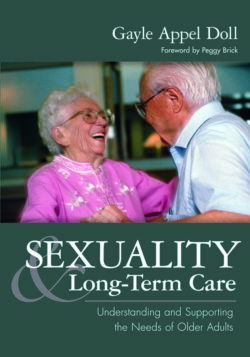 Nothing causes seniors to experience a greater decline in health and emotional well-being than social isolation. Producing more than just feelings of loneliness and hopelessness, social isolation makes seniors less safe, puts them at greater risk for financial, emotional, or physical abuse, and may contribute to rapid deterioration. This book offers service providers valuable tools for combating these negative outcomes.
Nothing causes seniors to experience a greater decline in health and emotional well-being than social isolation. Producing more than just feelings of loneliness and hopelessness, social isolation makes seniors less safe, puts them at greater risk for financial, emotional, or physical abuse, and may contribute to rapid deterioration. This book offers service providers valuable tools for combating these negative outcomes.
Written in concise, easy-to-understand language, this resource will help you identify seniors in the community and in residential care whose health and well-being are in jeopardy. Learn to recognize the symptoms of social isolation and find concrete suggestions for reaching out to those living in your community—but not thriving in it. Based on decades of experience with individuals living in senior housing, the book focuses on ways to address 10 factors that lead to social isolation, including:
- physical health problems and disabilities
- behavioral and cognitive health issues
- gender disparities
- loss of partner, friends, and pets
- minority sexual orientation
- language barriers
Validated by research, Connecting with Socially Isolated Seniors includes findings from a large survey of older adults living in independent senior housing communities and from focus groups conducted with senior caregivers, service coordinators, and activities directors. This resulting guide highlights the role of empathy and an inclusive attitude when exploring seniors’ needs—and the importance of getting to know each older adult as a unique human being—to be effective in supporting those who live alone. Facts, checklists, and a quiz help to easily identify individuals who are at risk for social isolation. Additionally, practical “How to Help” sections show how to intervene with specific, actionable suggestions.
Community-based senior housing providers, assisted living communities, area agencies on aging, and other state and regional aging services organizations will find Connecting with Socially Isolated Seniors to be an invaluable addition to their staff resources.








Administrator –
“This book shines the spotlight on how social isolation impacts the health and functioning of elders. More importantly, it identifies practical suggestions for providers to address this issue. It is a “must read” for staff who work with elders in congregate senior living settings.”
—Joanne Handy, RN, MS, President and CEO, Aging Services of California
Administrator –
“Our youth-oriented society is very good at writing people off because they are old and gray, excluding them from the flow of life by making assumptions about their capacity to engage, contribute, and experience. But in fact, wrinkled skin and gray hair don’t define the person—the complex richness of the individual—any more than freckles and a bobbed haircut. Osage gets this. The path she has laid out for professionals who work with seniors is deeply humane, practical, and rewarding.”
—Wendy Peterson, Senior Services Coalition of Alameda County
Administrator –
“As a former administrator of a 110 unit, HUD subsidized apartment building for low income older adults in San Francisco, I have personally witnessed how easily residents can become increasingly isolated as their health becomes frailer. Through the efforts of our service coordinator, we were quite successful at helping our frailest residents “age in place” but, looking back on it now, I realize we could have done more to help our residents “age in community” and, by doing so, reduce their isolation. The steps, strategies, ideas, and facts contained in this book will make it possible for any HUB subsidized senior apartment manager/service coordinator to reach out to their isolated residents in a variety of ways that are right for each individual and, by doing so, reduce their isolation, help foster community, and improve the quality of life of not only their isolated residents, but others as well.”
—Ray Earnest, MSW, LCSW, Pacifica, CA